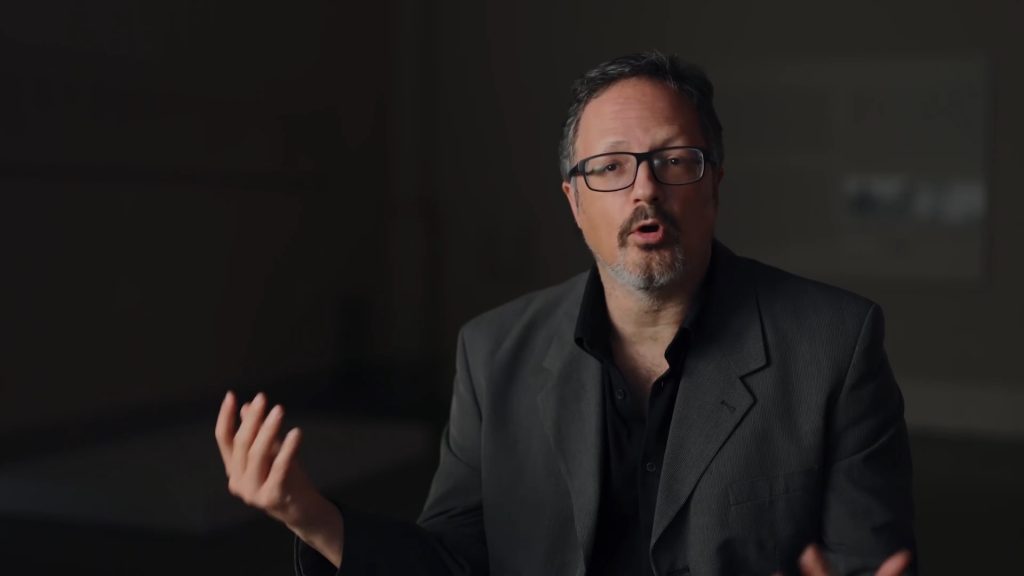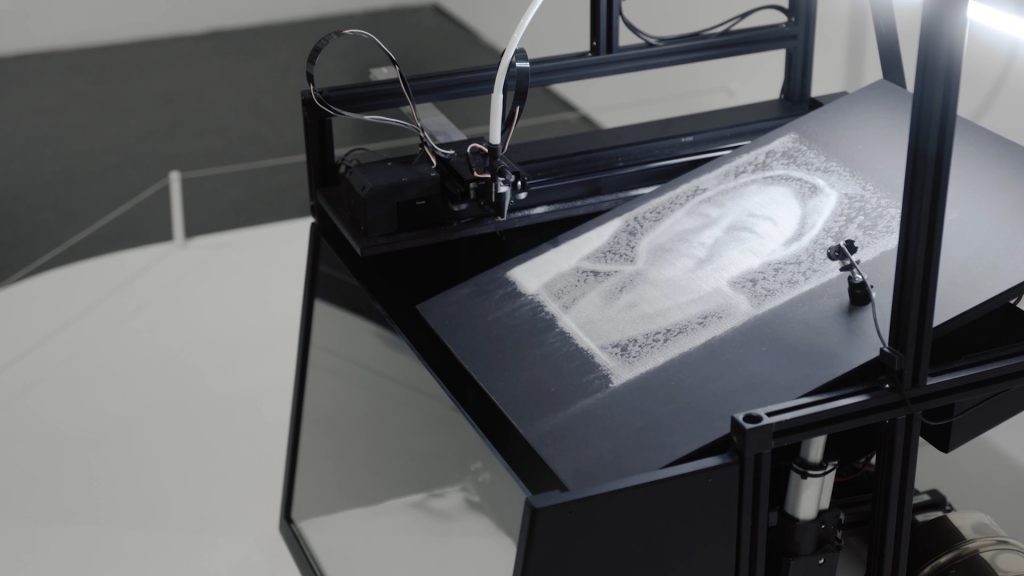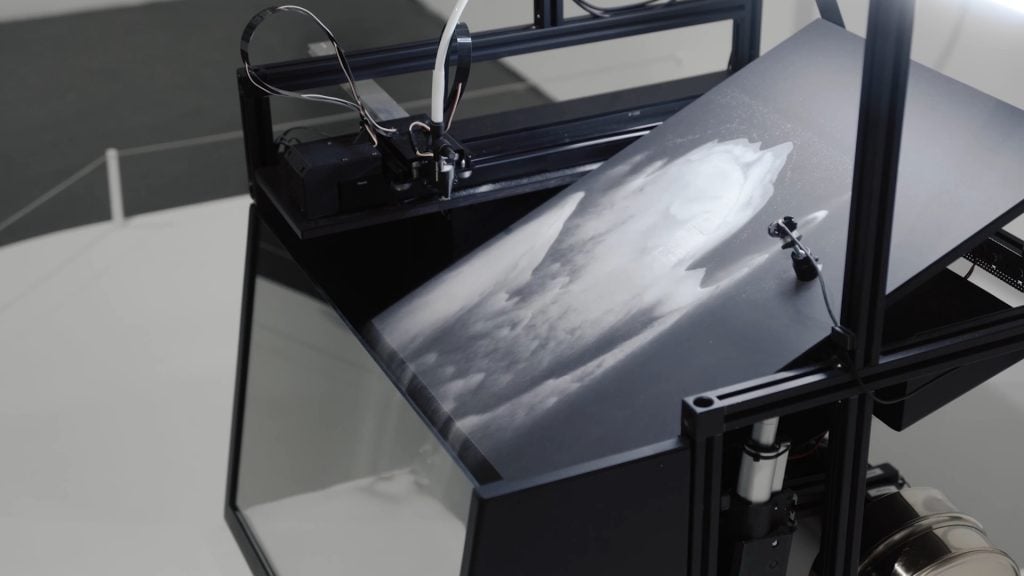Art World
‘Sometimes the Ephemeral Helps You Remember’: Watch Rafael Lozano-Hemmer Build a Machine to Memorialize Pandemic Victims
As part of a collaboration with Art21, hear news-making artists describe their inspirations in their own words.

As part of a collaboration with Art21, hear news-making artists describe their inspirations in their own words.

Caroline Goldstein

Since early November 2020, an unusual type of memorial has been quietly paying tribute to loved ones who died from Covid-19, with portraits made of sand depicting the faces of those lost to the pandemic. The work, called A Crack in the Hourglass, an Ongoing COVID-19 Memorial, is the work of artist Rafael Lozano-Hemmer, and is on view at the Brooklyn Museum through June 26, 2022. The participatory work invites individuals to send in photos of deceased family and friends—often loved ones they were barred from being with due to health restrictions, or for whom they have been unable to hold a funeral or memorial service. The artist, whose practice centers on technology, then uploads the image and feeds it through custom-made software that is attached to a robotic arm. After analyzing the picture, the mechanized arm draws the faces with sand. Once the image is complete, the sand is poured off and recycled for the next portrait.

Still from the Extended Play film “Rafael Lozano-Hemmer: A Crack in the Hourglass.” © Art21, Inc., 2022.
In a new exclusive interview with Art21 as part of the Extended Play series, Lozano-Hemmer explains how the loss of a loved one has been compounded by the inability to mourn in traditional ways. “As a Mexican…we think a lot about death, and all the rituals, the toasts, the things that we do to have closure and to bid farewell are critical to our survival as a community,” he says. “And that could not happen.” With social distancing still in place, the artist and his studio wanted to find a way to bring people together emotionally, even across long distances. Each time A Crack in the Hourglass is activated, cameras are trained on the artwork and streamed live for others to watch. “We thought that it was important that it’d be something live that somebody from any time zone could log into and experience, together with their loved ones,” Lozano-Hemmer says, adding that the work comes out of “a desire from all of us to do something that would allow us to…not feel so lonely.”

Still from the Extended Play film “Rafael Lozano-Hemmer: A Crack in the Hourglass.” © Art21, Inc., 2022.
Lozano-Hemmer deems his artwork an “anti-monument” that stresses the importance for memorials “to disappear, question themselves, that complicate some of the stories that we tell ourselves.” To date, hundreds of portraits have been made with the same sand, invoking what the artist describes as a “sense of universal solidarity around this.” He adds, “Sometimes the ephemeral helps you remember.” Watch the video, which originally appeared as part of Art21’s Extended Play series, below. “Rafael Lozano-Hemmer: A Crack in the Hourglass, an Ongoing COVID-19 Memorial” is on view at the Brooklyn Museum through June 26, 2022.
This is an installment of “Art on Video,” a collaboration between Artnet News and Art21 that brings you clips of newsmaking artists. A new series of the nonprofit Art21’s flagship series Art in the Twenty-First Century is available now on PBS. Catch all episodes of other series, like New York Close Up and Extended Play, and learn about the organization’s educational programs at Art21.org.